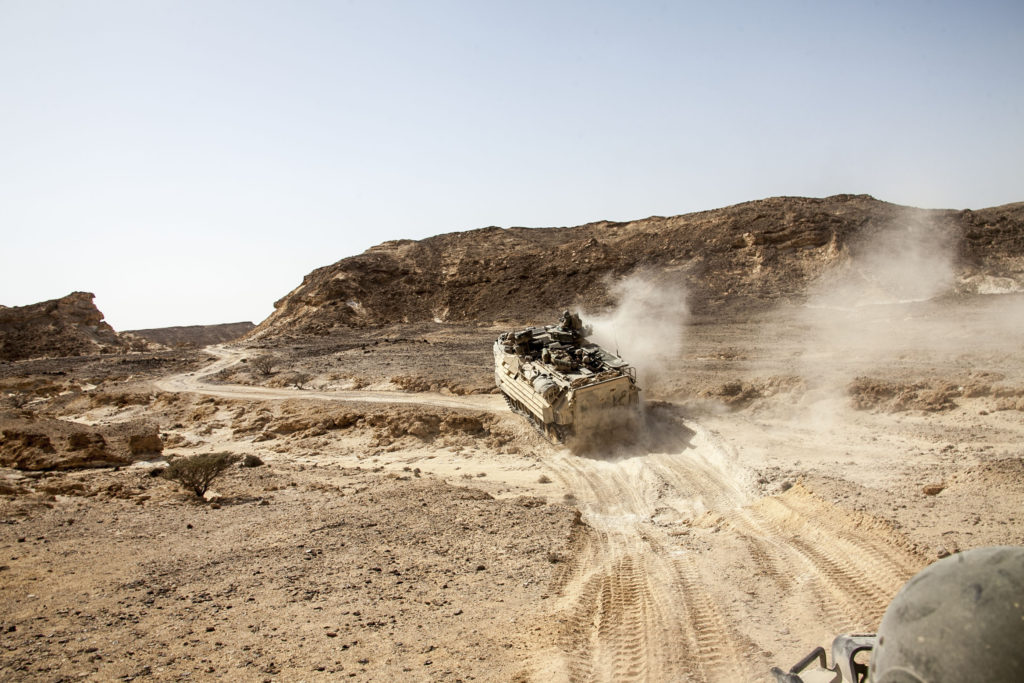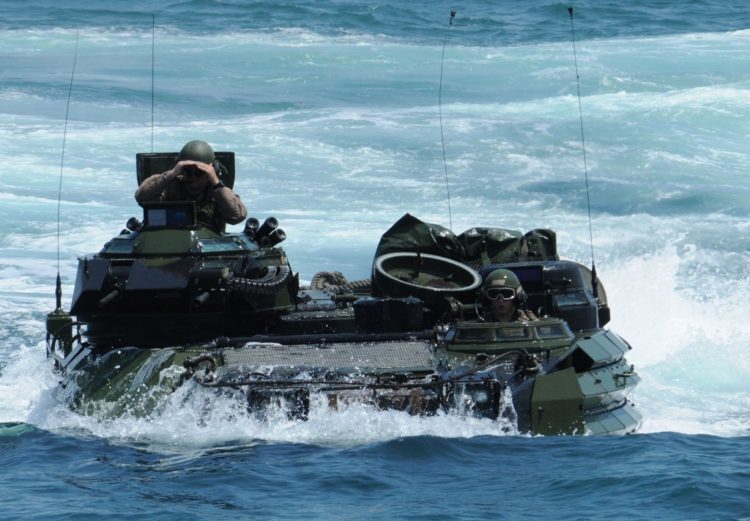This is part III in a four-part series on AAVs. You can read part I here. You can read part II here.
Even with the Amphibious Combat Vehicle rolling out, the question that always seems to come up is: what does the future of war look like? Will it involve or even need a vehicle like this? That same question arose after World War II, and it was answered in 1950 when Marines conducted an amphibious landing in Korea. Marine amphibious vehicles were again used, to a lesser degree, in Vietnam. AAVs were even used to cross the Tigris River into Baghdad in 2003, causing many of the Marines to question the vehicle’s reliability in the water after the punishment suffered during the invasion.
Now, looking ahead, it seems less and less likely that there be another large-scale amphibious landing on an adversarial beach, especially one in which ACVs will be the first wave. In his address at the Naval War College in 2009, then-Secretary of Defense Gates noted:
“I have also directed the QDR [Quadrennial Defense Review] team to be realistic about the scenarios where direct U.S. military actions would be needed – so we can better gauge our requirements. One of those that will be examined closely is the need for a new capability to get large numbers of troops from ship to shore — in other words, the capability provided by the Marine Expeditionary Fighting Vehicle […] But we have to take a hard look at where it would be necessary or sensible to launch another major amphibious action again. In the 21st century, how much amphibious capability do we need?”
Advertisement
While the Marine Corps sees the Amphibious Combat Vehicle as the next generation of vehicles to land them on beaches, traverse rivers, lakes, and littorals, there is the if such a need will ever arise. In developing the EFV, it seemed as though the Marine Corps was looking backward more than forward, determined to create a high-water-speed amphibious vehicle that could itself assault a beach supported by Naval fire and air support.

With that scenario looking less likely in the 21st century, the ACV seems almost more of a land vehicle with amphibious capabilities. It keeps the signature mission of the Marine Corps intact while nodding at a future of war that will probably not require large-scale amphibious assaults. In the time of funding wars between the branches and with doubts over the existence of an amphibious force like the Marines, the ACV keeps the Marine Corps relevant and their budget renewable.
Thought leaders in predicting future wars believe that:
“Future conflicts will likely place a premium on being able to operate at range. Staying outside adversaries’ missile ranges and basing from afar both could be important factors, and the U.S. military should invest in these capabilities. All branches of the military will need to enhance their information warfare capabilities, especially for gray-zone operations. Because of the trend toward greater use of artificial intelligence, the military will need to invest in automation.”
With the creation of the Space Force, as well as the commercialization of space exploration by SpaceX, Virgin Galactic, and Blue Origin, the nation’s eyes are increasingly tilting up to the night sky. As more satellites with military applications are launched, it makes sense to invest in the Space and Air Forces, probable frontrunners for helping decide the outcome of future wars. It seems silly to think of a conventional, kinetic type of warfare in which Amphibious Combat Vehicles assault a beach at eight miles per hour in the water starting five-miles offshore on a mission that may be accomplished with less risk, greater stealth, and minimal collateral damage using Air Force drone strikes and the surgical precision of special operations. As back-and-forth trade tariffs between the U.S. and a rising China continue and cyber operations and information warfare escalate between the U.S., China, Iran, Russia, and North Korea, it seems non-kinetic and asymmetrical war is the future.
Yet, I still can’t help but wonder, whether the ACV, despite its newness, will be relevant or not beyond 2035 (when the Marine Corps says it will have completed its rescoping for the future of war.) Will the ACV’s use justify its cost? For those old enough to remember 9/11, we know just how difficult it is to predict the future of war and to forecast the next catastrophe or crisis that could send the U.S. careening into a conflict. Even more difficult is imagining that suddenly an amphibious combat vehicle is exactly the right tool for the mission, the way the MRAP was for troops in Afghanistan, saving lives in the fight in a way a Humvee or AAV never would.

Still, it’s not impossible that the Amphibious Combat Vehicle may be landing in Taiwan or somewhere in the South China Sea. China’s growth and influence may force other near-peers into a decision of whether or not to back China. In a speech given at West Point in 2011, then-Secretary of Defense Gates said: “When it comes to predicting the nature and location of our next military engagements, since Vietnam, our record has been perfect. We have never gotten it right, from the Mayagüez to Grenada, Panama, Somalia, the Balkans, Haiti, Kuwait, Iraq, and more — we had no idea a year before any of those missions that we would be so engaged.”
The wear and tear experienced by AAVs in Iraq led to serious readiness problems. The decade and a half the Marine Corps spent in the Middle East may have led to the same issue. Thus, the ACV may renew the purpose of the Corps, recalibrate its mission as a forward-deployed, lightweight, and quick reaction force. As the future of warfare seems to be more about precision attacks than all-out war, and the days of storming a beach seem past, the ACV may be able to provide that precision attack on beaches that have been cleared or secured and ready for the first wave of Marines to make entry. Once a foothold is made, the ACVs can then provide the armor, mobility, lethality, and survivability to continue inland that the AAV lacks.
But is the ACV just a bandaid being applied to the problem of the outdated AAV?
In October 2017, Deputy Marine Commandant Lt. Gen. Brian Beaudreault stated, “We have to find a solution to getting Marines to shore, from over the horizon, at something greater than seven knots [8 Mph]. We must find a high-water-speed vehicle on the surface. We must.” Both the outdated AAV and the new ACV swim at a speed of about seven knots, so an over-the-horizon assault by ACVs is not going to happen. Tactically, it’s not even viable, given the long-range missile defense systems that force ships to keep a 75- to 100-mile standoff distance. Already, critics of the EFV had contested as such.
The bottom line is that the Marine Corps will not be landing on a beach that hasn’t first been cleared and secured by forward operators, ship-to-shore missiles, and air support. But, with the support of the ACV, Marines will have the armored support needed to be landing on beaches. That is, at least, until warfare evolves so much that a beachhead assault is no longer viable. But when will the next beachhead be too far? And what will the Corps look like until then?
This is part III in a four-part series on AAVs. Part IV will publish tomorrow. You can read part I here. You can read part II here.










COMMENTS
You must become a subscriber or login to view or post comments on this article.